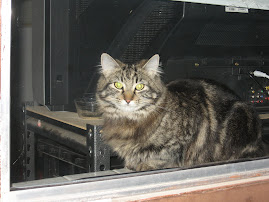




This is a rad picture of Bella Vista, the “beautiful view.” Scott took it when we were walking after language class late one afternoon, and I took a similar shot that did not turn out nearly as rad. We had reached the edge of town to the northeast, toward the sea, and a storm was brewing. The clouds were moving east to west, which can throw someone off when that someone is from the west coast of the United States.
I am infatuated with the clouds above this country. They never sit still. They shift, sifting light, and heave, and toss themselves into great heaps of color and robustness; they float softly, then swiftly, darkening and sweeping the sky with curtains of rain.
It is the rainy season, and this week has been proof of that. Our moods have mirrored the weather in some ways. It rains torrentially like a good thunderstorm in Alabama, sudden and surprising, except that the surprising thing to us is it continues at that rate for hours on end. A thousand tiny hammer-blows on the zinc roof. We have to repeat ourselves to hear each other over the roar. The improvised bridge between the sites in the south and Belmopan flooded, I suppose a fairly common occurrence considering it consists of a pile of stones and planks a scant 5 feet above the river at its normal level.
Despite it all, our training team, a group of 11 assigned to promote Healthy Communities, has built a latrine together and planted gardens at three different sites. The other two community training sites are Maya Mopan-speaking and are called Maya Mopan and San Roman. A helter-skelter fence, made of random boards, some wire screening, a gate, and the rusted hood of a car from the dump, guards our garden from the many chickens that peck and scratch about as they please.
Healthy Communities training is led by the world’s best cheerleader, Jamie. As Peace Corps Volunteers, one of the most important roles we can fill is that of cheerleader, or change agent, or advocate, in our communities. Jamie is pictured below wearing the t-shirt proclaiming, “Everything is possible,” which is indicative of the way she lives her life. She is sort of my hero. She is just too happy to be a realistic role model for my personality, but I admire her very much and would like to emulate at least some aspects of her character and sunny disposition. She describes herself as having a big heart for people, which is true. Somehow she is able to overlook all of the annoying, petty obstacles that stand in the way of helping and encouraging people, without being naive, and in the end, community goals are realized. And she smiles all the way through it.
I am infatuated with the clouds above this country. They never sit still. They shift, sifting light, and heave, and toss themselves into great heaps of color and robustness; they float softly, then swiftly, darkening and sweeping the sky with curtains of rain.
It is the rainy season, and this week has been proof of that. Our moods have mirrored the weather in some ways. It rains torrentially like a good thunderstorm in Alabama, sudden and surprising, except that the surprising thing to us is it continues at that rate for hours on end. A thousand tiny hammer-blows on the zinc roof. We have to repeat ourselves to hear each other over the roar. The improvised bridge between the sites in the south and Belmopan flooded, I suppose a fairly common occurrence considering it consists of a pile of stones and planks a scant 5 feet above the river at its normal level.
Despite it all, our training team, a group of 11 assigned to promote Healthy Communities, has built a latrine together and planted gardens at three different sites. The other two community training sites are Maya Mopan-speaking and are called Maya Mopan and San Roman. A helter-skelter fence, made of random boards, some wire screening, a gate, and the rusted hood of a car from the dump, guards our garden from the many chickens that peck and scratch about as they please.
Healthy Communities training is led by the world’s best cheerleader, Jamie. As Peace Corps Volunteers, one of the most important roles we can fill is that of cheerleader, or change agent, or advocate, in our communities. Jamie is pictured below wearing the t-shirt proclaiming, “Everything is possible,” which is indicative of the way she lives her life. She is sort of my hero. She is just too happy to be a realistic role model for my personality, but I admire her very much and would like to emulate at least some aspects of her character and sunny disposition. She describes herself as having a big heart for people, which is true. Somehow she is able to overlook all of the annoying, petty obstacles that stand in the way of helping and encouraging people, without being naive, and in the end, community goals are realized. And she smiles all the way through it.















